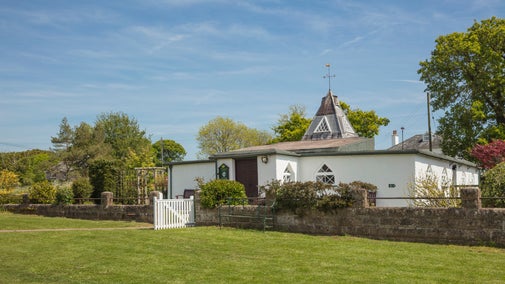The Estate
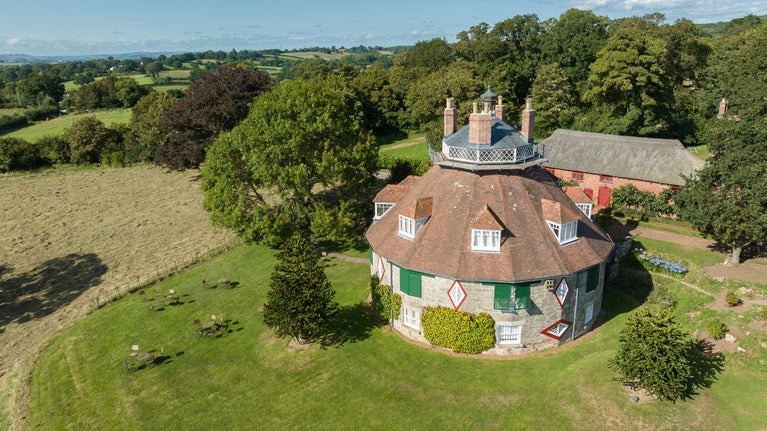
With views over the countryside to the Exe estuary and sea beyond, the estate at A la Ronde is as beautiful and varied as the house itself. The lawn, flower-rich meadow and orchard, with mix of old Devon apple varieties and medlar trees, owe their design to Mary and Jane Parminter, who created their home as a 'ferme ornée' or ornamental farm.
The Orchard
As you enter the Estate at A la Ronde, you walk along the edge of the orchard. These heritage trees were planted by the National Trust to mimic an orchard that the Parminters had on their grounds. The land which is now the car park, and this orchard, was the poultry field when the house was built.
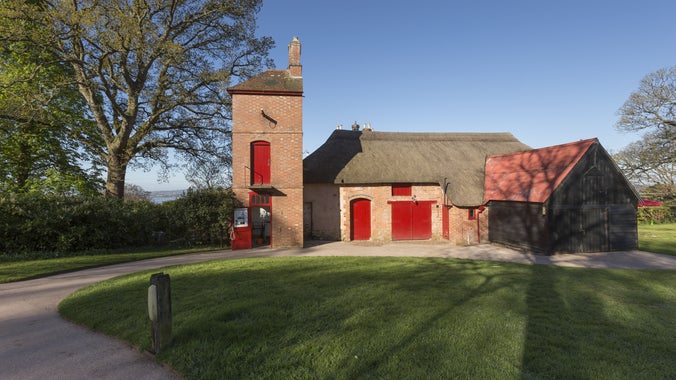
The Barn
Opposite the orchard, the large, thatched barn pre-dates the house, constructed of Devon cob. The brickwork was added by Oswald Reichel who set about 'modernising' the house, the tower included to provide running water in the house. Water was hand pumped from underground tanks which could then be pumped to the house.
The barn was used for horses and other animals and the stalls can still be seen. There was a room for the estate's groom and the black timber extension was intended to house a carriage.
On the other side of the Barn, there are diagonal paint marks which reveal where a glass walkway once stood between the barn and house. Badly damaged in a storm in 1987, it was subsequently demolished.
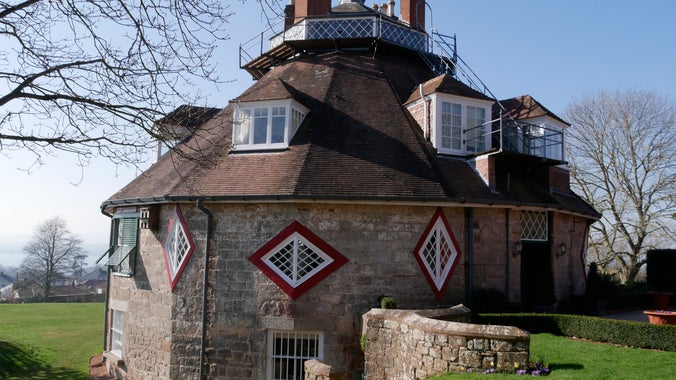
The House
A visitor's first view of the house comes around the side of the barn, revealing some of the defining features of the property. A sixteen-sided building with the octagonal shell gallery at the top, the building was inspired by the Basilica of San Vitale in Ravenna.
The red lozenge-framed windows immediately stand out, unusually placed on the house’s corners, probably to increase the available light. Symbolic of the Parminter coat of arms, the lozenge-shaped windows were a mark of their family.
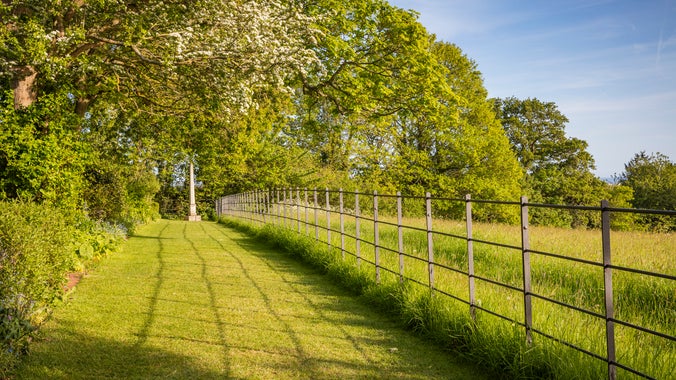
The Centenary Walk
A long grass path away from the house, the Centenary Walk borders the meadow. Records show the meadow was grazed by two milking cows and about 14 sheep. A ferme ornée, A la Ronde housed various animals and beautiful elements of farm life. Ornamental farms such as these became popular during the 18th century, as much for aesthetic reasons as for food, and one famous example was created for Marie Antoinette at Versailles in the form of the Hameau de la Reine.
From the centenary walk, there is a wonderful view across the meadow to the River Exe estuary. In the distance, a folly on the Powderham Castle estate can be seen. This is adjacent to the village of Kenton, where Mary Parminter lived on their return from their Grand Tour. From Kenton the cousins would have been able to see the meadow and barn, a desirable location to build their ornamental farm.
An obelisk, added by the National Trust, stands at the end of the Centenary walk. This addition echoes an obelisk erected by the cousins, as a memorial to family members, shown on Ordnance Survey maps in the original orchard. The original obelisk was probably removed in the 1950s.
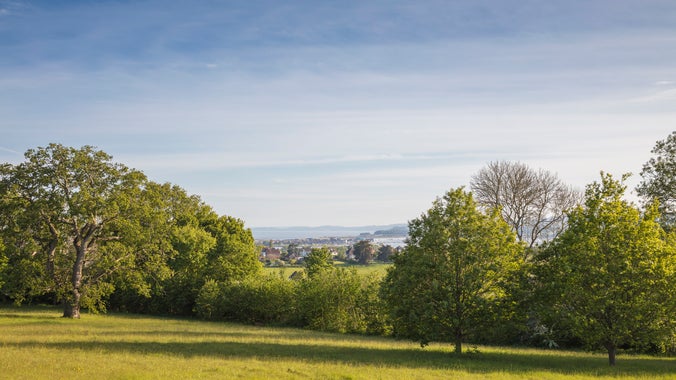
The Meadow view of the House
From the meadow, visitors can see the cupola, the small, dome-shaped structure on the top of the building, which was reinstated by the National Trust. This was more than likely installed as a warning bell. When the house was being built in 1797, England was at war with France - that year, the French landed in Fishguard.
The monkey puzzle trees next the house are also now in clear view. These are replacements for trees that were planted in the early 1800’s, probably purchased from Veitch’s nursery in Exeter, which would send out plant hunters.
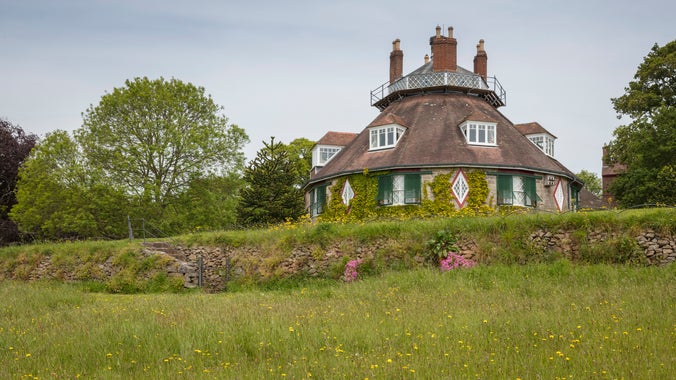
The Perimeter Path
In the lower corner of the estate are two stone gate posts, moved here when the original entrance was widened to allow vehicular access. Around the edge of the meadow, the new Perimeter Path borders the estate. Along the path are several imaginatively designed benches, acknowledging Mary Parminter’s Will, in which she requests decorative benches be retained in the grounds.
Further along the path, a cut grass path stretches from the house. Shown on old maps, this path led to the now boundary brick wall, behind which was the kitchen garden and gardener's cottage.
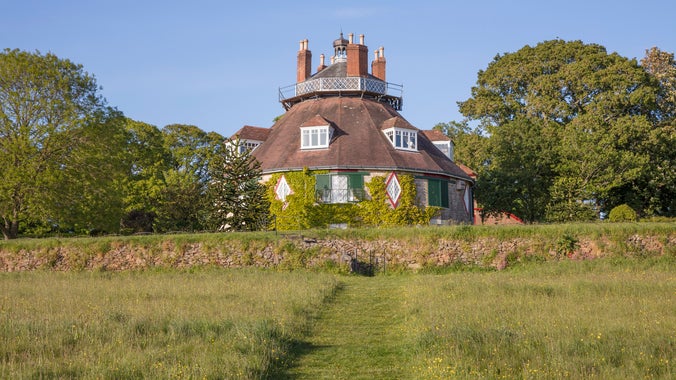
The Compendium
The Compendium is a collection of stories to delight and surprise. You can explore all things A la Ronde here in one central place for the first time. We will be adding new stories for years to come.

Meadow Perimeter Path
Find out more about the Perimeter Path at A la Ronde and the project's aims to reinstate this garden feature.
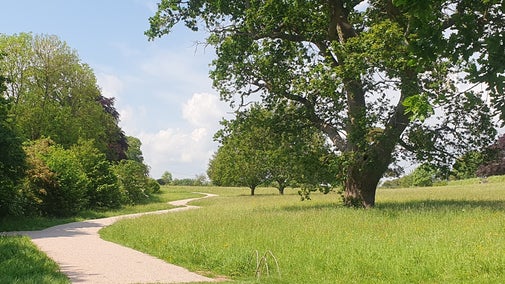
The Ornamental Benches
As part of the development of the Perimeter Path at A la Ronde, a series of ornamental benches were commissioned. Learn more about this part of the project, inspired by the Parminters' original plans.
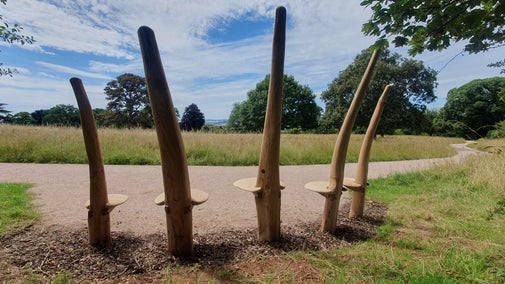
Point in View Chapel
Learn more about Point in View, the chapel made by the Parminters at A la Ronde as part of their estate.
